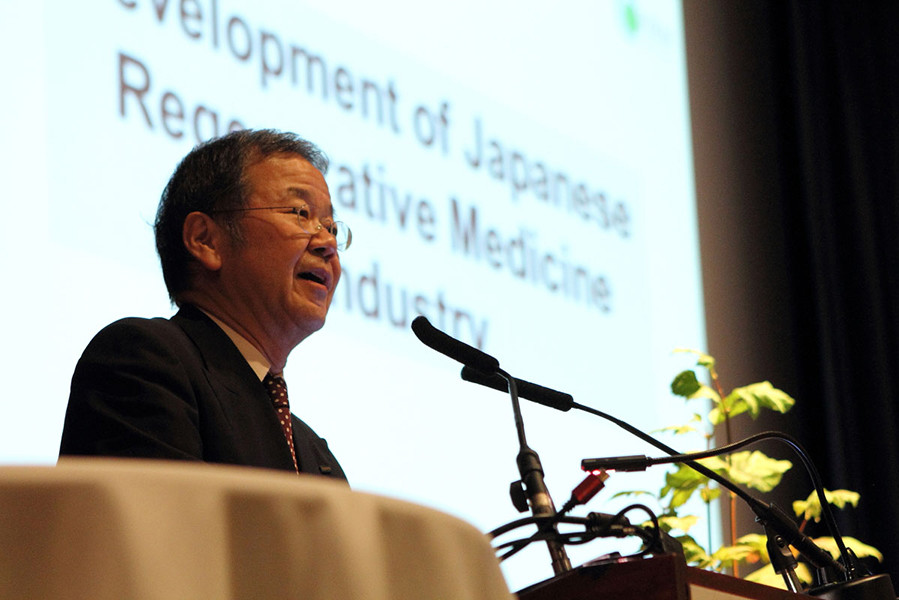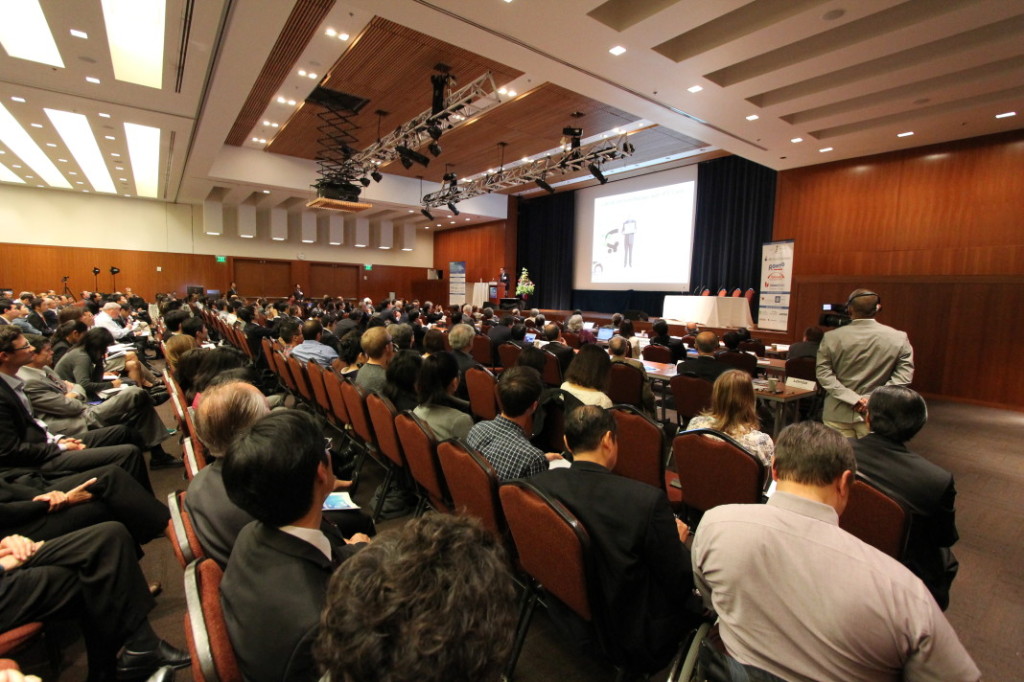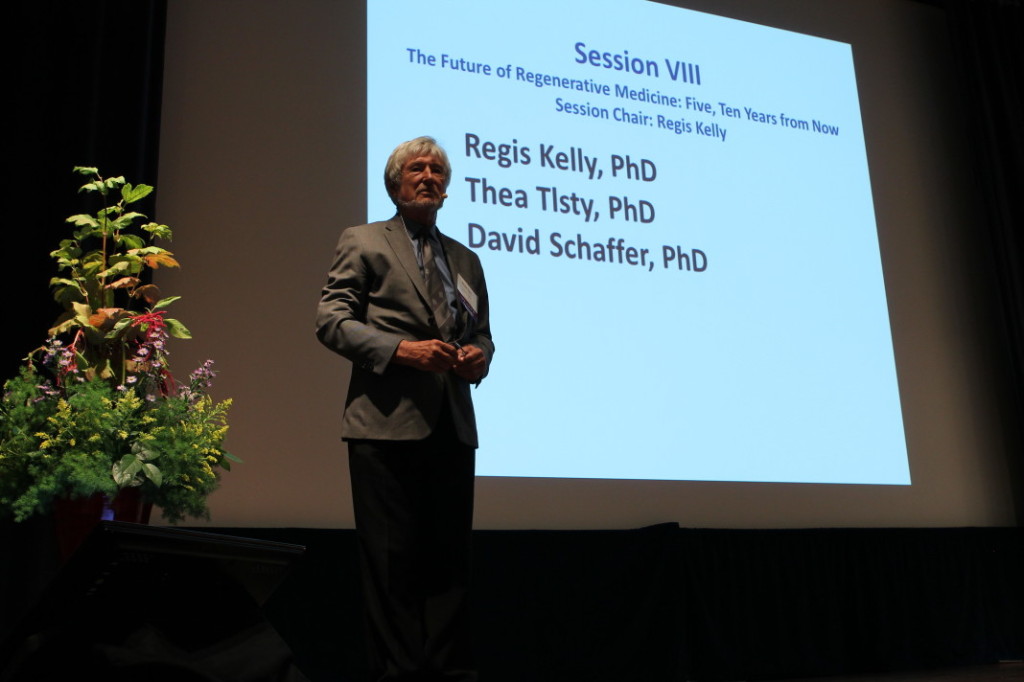
George Hara, Chairman- Alliance Forum Foundation, San Francisco
Born in Osaka, Japan in 1952, George Hara is an archaeologist and a noted venture capitalist who was the Prime Minister’s Special Commissioner on the Government Tax Panel, and served as a member of various government committees including Japan’s Industrial Structure Council of the Ministry of Economy, Trade and Industry. George Hara invested in many of the technologies that connect the world today, and is among the most prominent Silicon Valley venture capitalists responsible for the emergence of numerous industry pioneering firms. He is internationally known as a leading edge technology capitalist and visionary architect in the field of post-computer technology. He is the chairman of the Alliance Forum Foundation (AFF) based in San Francisco, US, and is also the author of numerous publications, including a Japanese best-seller entitled 21 Seiki no Kokufuron (An Inquiry into the Nature and Causes of the Wealth of Nations in the 21st Century), published by Heibonsha in 2007, and Atarashii Shihonshugi (New Capitalism) published by PHP in 2009.
Manish Uprety: Dear George, it is good to speak with you on behalf of Nueva Diplomacia. I still remember your visit to India in the year 2007 where you gave a presentation at the National Research and Development Corporation in New Delhi about the post computer age and the evolving technological architecture. However what impressed me was your ability to draw the exact map of South America impromptu, it is something which I shall never accomplish correctly. What made you change tracks from archaeology to investing in technological ventures? Why should one not call you the Indiana Jones of Technology?
George Hara: It is a pleasure to interact with you Manish.During my college years, I was absolutely charmed by archeological sites and ruins of the Mayan civilization in Central America. As one can very well imagine that archeology is a dear enterprise and costs money. When I was 27 years old, I ran out of money for my archeological projects. Then I thought, like Heinrich Schliemann who became a pioneer in archaeology using the money he earned by running a successful business, learning business and becoming a successful businessman might allow me to devote myself in archeology in the future. So, I decided to go to the U.S. to study English and business, and Stanford University was my choice because the ambience there felt similar to that of South and Central America.
In Stanford, I learned many business skills and gained experience, much like a sponge that absorbs water – one is like that in his twenties. I started a company with an optic fiber technology and eventually sold the business. Using the proceeds, I got into the venture capital industry.
Manish Uprety: No romance without finance and the same goes for archaeology as well.I can understand what you mean by the ambience of Stanford. One can breathe where people think. It is a wonderful place. By the way,I was impressed that the world evolved in the similar way after a few years, exactly the way you had predicted. It is fascinating that technology impresses one just like astrology. Like Prof. Kedar Sharma of Jaipur, Smt. Vadudha Wagh of Mumbai or Karve ji of Pune, an able astrologer unfolds one’s life and predicts events as on the continuum of one’s life time. Then there is Samudrik Shastra where every natural or acquired bodily mark is decoded to explore its one’s psychology and destiny. When eclipses, tides and seasons can be predicted, so can the events in one’s life but one has to believe that one is part of this great existence called universe which is governed by certain principles. I recently read that the government is using certain animals to predict earthquakes in China as their behavior changes prior to an earthquake. India has a long and distinguished tradition of astrology but one has to find a good astrologer. To see the future is not only a science but also an art. Howas a venture capitalist do you invest in evolving technologies which meet the needs of the future? The question assumes importance because you were among the investors who invested in technologies that connect the world today.
George Hara: Ancient civilizations reached high watermark in their respective times. Some like India continued with traditions like Mathematics, Yoga, Astrology and Ayurveda. You see that Archeology is a discipline where the time axes are in thousands of years and one strives to know the psychology behind artifacts and ruins. Applying these archeological principals will then allow one to contemplate an ideal way of human society in the far-off future. Then questions such as how technological advances can promote peace and enrich human lives arise that one strive to answer.
When I shorten the time axes to the near future – 50 or 100 years from now – and for example ask what medical technology needs to be developed for us to live healthy during the whole lifespan, the answer naturally is the regenerative medicine technology.
As far as the Information & Technology field is concerned, when I think about how internet can enrich human lives and promote peace, the current business model that relies on advertisements to raise revenues is not the answer. If instead knowledge database engines can in a simple and fast fashion collect, analyze, and present necessary information out of an enormous data base, such a technology sure would enrich people’s lives.
In other words, predicting the future technologies and their relevance and applicability can be achieved by looking into the human history deductively and functionally.
Manish Uprety: Would you like to share any of your memorable experiences as a famous venture capitalist in technology?
George Hara: It was 1985 when I became a venture capitalist. That was when Silicon Valley gained momentum and there were many venture capitalists worthy of respect. Franklin “Pitch” Johnson was the man who taught me what venture capital was in Stanford. Through his lectures that invited many venture capitalists as guest speakers, I became convinced that venture capital is like manufacturing in its purest essence; that is, venture capital creates from scratch something valuable to humankind. Others include Arthur Patterson who was my colleague at Accel Partners, and Brook Byers and Frank Caufield with whom I co-invested in startups. I learned a great deal from many venture capitalists.
Venture capital differs from speculative money games, hedge-fund philosophy, or shareholder activism that aims to maximize only the shareholder value. Venture capital is also different from private equity which ordinarily makes investments in stable growth-stage companies or in troubled companies to clean up their balance sheets. Real venture capital creates value from nothing and is the driving engine of the American dream. Real venture capitalists, however, have been disappearing from Silicon Valley. This sad trend is fueled by shareholder-centric school of capitalism, which requires the maximization of short-term returns to investors.
Manish Uprety: I think sadness is a prominent feature not only in venture capitalism as you notice it but also in life. When summer is there can autumn be far behind?
You were on various government committees of the Government of Japan including the Tax Panel. The notion of taxes especially enormous rates of taxes is a crippling one for the enterprise and individuals of a nation. One pays the income tax, and then through VAT one pays tax on the goods and services consumed through the money which has already been taxed, and it goes on and on. It is a vicious cycle. The extremely high tax rates in India till a few decades back choked the economy and its very growth. A person in India pays tax at a rate comparable to the UK even today. How do you see the global tax structure and its taxonomy evolve considering the fact that the Mid East region which now has some of the most prosperous nations in world has non-existent income tax, and countries in Far East Asia have a very low tax rates? I am of the opinion that lowering tax rates shall empower the citizens of a country economically and also its enterprise but your view as an expert of the matter indeed matters a lot.
George Hara: In my opinion, what is important is to recognize the fact that lowering tax rates does not necessarily mean less tax revenues. If, for example, lower tax rates in a country lead towards the creation of new industries, many businesses emerging out of every new industry would be potential tax payers in the long term. Therefore, I believe that the role of governments should be to focus on building necessary frameworks and structures that enable startups and new industries to take form and succeed. Funding for education and basic scientific and technological research, providing risk capital for venture companies, and regulations and deregulations for new stock markets for emerging businesses may be good examples, while it is also very important to cut unnecessary spending.
Manish Uprety:Leadership and the pursuit of excellence has been an important trait of the Japanese society. The late president of India, Dr. APJ Abdul Kalam had said that in this world only strength respects strength. At a time when European influence was spreading through colonialism across the world, the defeat of the Russians by the Japanese in 1905 inspired many colonized countries in Asia and elsewhere to renew their struggle against the Europeans.
After suffering the enormous devastation in the Second World War including attack of nuclear weapons, Japan soon become a prosperous nation and a leader in many fields. And now Yamazaki Single Malt Whisky is rated better than the best of Scotch that Scotland can produce. What is ingrained in the fabric of the Japanese society that makes Japanese leaders in their respective field?
George Hara: Japan’s success is not just a recent phenomenon. I believe the reason behind Japan’s success lies in the spread of basic education at an early era. In the Edo period that started in the 17th century and ended in the 19th century, there were Terakoyas (literally translated as temple schools) that imparted reading, writing, and math (i.e., the abacus) skills not only to the children of upper and samurai classes but also to the commoners such as merchant and farmer classes. Also, the Japanese seem to have a strong yearning to better their own country by their hard work. When I visit developing countries, I sometimes doubt whether members of the ruling class there are really interested in improving their country. The attempt by the ruling class of a nation to somehow transfer their wealth overseas is often seen in many developing countries but it is extremely rare to witness such an occurrence in Japan.
In the West and its former colonies, the thought that “the powerful are the winners” is in the mind of the ruling classes, but there is traditional Japanese saying “good luck lies in what others have left behind.” In international negotiations, Japan often sticks with the last remaining choice that other countries don’t take and finds out decades later that it is the best choice.
The Japanese are traditionally taught that what is good for the many is what is good for the individual, and thus, I believe 99% of the population (1% is an exception) decide and act accordingly. For example, the recent hike in the consumption taxes – which of course is a negative factor to all households – is very popular according to polls.
Also, the concept of value popular in America is money whereas the Japanese are rather indifferent about money. Many Japanese people believe that there are a lot of things besides wealth that one should strive for in life. Japanese traditions where multitudinous Gods or Spirits are regarded with respect may well go along with the coming era of diversity. After the colonial period when Britain and France ruled the Seven Seas and forced their laws and systems to be in place, there was the post-WWII age when the United States and Soviet Union tried color-coding with capitalism and socialism. Japan, without completely becoming one or the other, developed as a capitalist nation yet with a robust middle class. In this sense, Japan could be an excellent model for countries in Asia, Africa, and Latin America that are rapidly growing and developing. I think in fact many developing countries would like a strong and stable middle class and perhaps smaller ultra-rich and poor classes.
Manish Uprety: I tend to agree with what you say as it is very easy to defeat someone but it is extremely difficult to win someone. Though money has its utility, life is bigger and beyond money. The profound wisdom of Basho’s haikus cannot be quantified in monetary terms but only experienced.
You are also the Chairman of the Alliance Forum Foundation. Please tell about the organization.
George Hara: Yes, the Alliance Forum Foundation (AFF) is a not-for-profit organization which has a Special Consultative Status with the UN Economic and Social Council. Not only does AFF promote above-mentioned Public Interest Capitalism and aspires to design a new-generation corporate governance, the organization has many meaningful activities, including the Nutrition Project, microfinance capacity building, business support in developing countries, and new business and industry development project. Your readers can find more information on our website at www.allianceforum.org/en, but I would particularly focus on two of our projects today: the Nutrition Project and New Business/Industry Development.
The Nutrition Project has made a great progress in the past few years. We use a kind of highly nutritious, edible algae called “Spirulina” to combat chronic malnutrition in Africa – Zambia, more specifically. In our first effectiveness study of Spirulina which we completed in 2013, we examined the growth of 60 young children by dividing them up in two groups– one fed with plain porridge and the other with Spirulina-added porridge for 9 months. As a result, the group of children who had porridge with Spirulina mixed in showed better growth in every index measured, such as the height, weight, mid-upper arm circumference, and frequency of illnesses like a cold and diarrhea. With this excellent result, AFF plans the second effectiveness test with a longer term (12 months) and more participants (500 young children), which begins in Zambia in 2015. It is worth noting the unique aspect of our Nutrition Project, which is that Spirulina is an African-native plant, unlike the food and products used in other malnutrition programs. Our goal is the local production and consumption of Spirulina, and in 2014, AFF started a pilot project of Spirulina cultivation in Zambia. Your readers can find more about our efforts online, including the ways you can get involved.
The other project I want to mention today is New Business/Industry Development. As you know, new businesses and industries are essential in the healthy development of any society, and we currently work with the regenerative medicine industry that arises from innovative stem-cell technologies. Dr. Shinya Yamanaka was awarded a Nobel Prize in 2012 for his discovery of induced pluripotent stem cells (iPSCs). The iPSC technology lets researchers turn a mature cell – any cell like a skin cell – into a stem cell that can become any types of cell, and thus gives a whole new world of opportunities. Growing a new tissue and organ made of your own cells, for example, is now a possibility. The technology, however, needs to develop into businesses and an industry before we can benefit from it, and the commercialization and industrialization processes take time and resources. To make those processes smoother, AFF has held an industry conference, attended by top business, academic, and governmental leaders of the field. This event, the World Alliance Forum in San Francisco (WAFSF), will take place in California on 12th and 13th November 2015, and the website (www.wafsf.org) has more information and updates. Please consider becoming a part of the new industry by participating.
Manish Uprety: You are an avid writer as well and your books 21 Seiki no Kokufuron (An Inquiry into the Nature and Causes of the Wealth of Nations in the 21st Century) and Atarashii Shihonshugi (New Capitalism) are best sellers. You also write about Public Interest Capitalism (PIC). Please elaborate upon it.
George Hara: The central theme of PIC is the idea that that a company exists as a result of all its stakeholders, which includes its managers, founders, employees, shareholders, customers, suppliers, local communities, and even the Earth and environment. In other words, a company is of a public nature and assumes responsibilities to the public. I believe a company is responsible for the well-being and benefits of all its stakeholders in an equitable fashion.
In the West, the prevalent idea is instead that a company is owned by shareholders. The ultimate goal of a company is to maximize the shareholder value and return or ROE. I often see adverse effects of putting too much focus on shareholder values
Manish Uprety: And the prevalent ideas of the west travel wide and afar- look at McDonalds or Ebay and their various impacts.I cannot help but think about the nomenclature you use-Capitalism. Marxism is a failed ideology as it does not regard knowledge or intelligence as a factor in social dynamics. Knowledge has become the most important tool of development in our times. The word “Capitalism” was first coined by Marx and continues to be used as a pejorative by the left. In fact, a few days back I had a discussion with my friend Alex about the right way, left way and the correct way, and but of course about Amartya Sen. Left is always very confusing such as if one loses one’s left arm, will one’s right arm be left. Perhaps the BBC or the Brtish Labour party know better- they give an impression that they know all. I take Alex seriously as he is a writer and an expert on ballet, dance and western music but I cannot fathom how he can enjoy the way he drinks. I think he thinks the same about me. I think that comprehension and understanding is very much like grass which is always greener on the other side. I always take it as a food for thought.
And we live in post ideological times where people’s welfare matters the most as one can infer from the claims people make that the US is taking a turn towards left and the China is actually a capitalist state. Though I cannot understand why the Guardian writes about it in 2015.
Japan is a rich and ancient culture and I am sure it has words which are able to deliver the message you want to convey. Many Japanese words have found their way into the English language such as – Zen, Haiku, Kaizen, Zaibatsu and TYCOON- which convey a very precise meaning. What is your logic of using the Marxist jargon ‘Capitalism’ in your works? Though herself an individualist Ayn Rand propounds on the concept in her works.
George Hara: As you point out well, it might have been better to use Japanese words. On the other hand, your readers can know more about Public Interest Capitalism through Alliance Forum Foundation website. Please access-
(http://www.allianceforum.org/en/capitalism/)
Though established frameworks and concepts have certain ability to convey the message to a new reader, I think that it is limited for a new and evolving field. My main endeavor is that people should be able to comprehend the concept so that they can become a part of the positive transformation through PIC.
Manish Uprety: Indeed, as I often say- “When in Rome, wear a Toga and when in India, do Yoga.” But now the whole world celebrates the International Day of Yoga. I would have preferred a Japanese word to convey the essence of PIC. It is also important as it is the very mechanism by which contemporary languages enrich themselves. It is the context which matters the most. You know that Mahatma Gandhi used the Samskrit words ‘Satyagraha’ and ‘Ahimsa’ for the methods he adopted for struggle against the British Empire to secure freedom for India.
I see that Alliance Forum Foundation also organizes World Alliance Forum in San Francisco (WAFSF) every year. This year WAFSF would be about Stem Cells and Regenerative Medicine. Please tell us about it.
George Hara: I have already mentioned about it earlier in a comprehensive manner.As you know, new businesses and industries are essential in the healthy development of any society, and through World Alliance Forum in San Francisco (WAFSF), we currently work with the regenerative medicine industry that arises from innovative stem-cell technologies. It is attended by top business, academic, and governmental leaders of the field. This event, the World Alliance Forum in San Francisco (WAFSF), will take place in California on 12th and 13th November 2015, and the website (www.wafsf.org) has more information and updates. I invite your readers, the international development community and decision makers to attend the 2015 WAFSF. Since the attendance is limited for the event, I would suggest that an early reservation is made by the attendees for secured participation and to avoid disappointment.
Manish Uprety: What are the mechanisms by which people and organizations of South America can cooperate with Alliance Forum Foundation and participate at WAFSF?
George Hara: AFF has many projects and there are a lot of ways through which the people in South America can participate in our activities. We can co-develop a new Spirulina food product to inform consumers about our project, if you have a food business. If you work in the field of poverty alleviation, you can perhaps take our hands-on microfinance courses that take place in Bangladesh. For biomedical professionals and businesses, 2015 WAFSF is an excellent business development opportunity. Again, please visit our website www.allianceforum.org/en for more details.
Manish Uprety: What is your message and of the Alliance Forum Foundation to the people of Chile and South America?
George Hara: While I want to encourage people of Chile and South America to participate in our projects, I do realize many of our projects happen thousands of miles away. For those who might not be able to participate physically, I want to emphasize that it is entirely possible for a small organization like ours to make a difference in the life of the many in places afar. If you have a passion and vision, and think that you can make things happen, we can create a better future together for the humankind and the world. We live in a globalised world and therefore have to address the common challenges we face by a cooperative and participatory approach.
Manish Uprety: Thank you George. It was wonderful to speak with you on behalf of Nueva Diplomacia and to know about the great work you and the team of the Alliance Forum Foundation is doing across the globe. Personally, I wish closer relations between India and Japan for a better world. I still remember Chiyuki, St. Martins in the Field and her fingers on piano but the times turned turbulent and cruel. Such are the twists of fate that deluge the lives of men but the life goes on.
George Hara: It is an honour and a pleasure to interact with Nueva Diplomacia. We all aspire for a better world. I extend my best wishes to your readers. Thank you, Manish.
George Hara, Chairman- Alliance Forum Foundation, San Francisco

Weblinks-
Alliance Forum Foundation– www.allianceforum.org
World Alliance Forum in San Francisco– www.wafsf.org
*DISCLAIMER* Nueva Diplomacia does not take any responsibility for the views and opinions expressed in the interview which belong solely to the interviewee.














